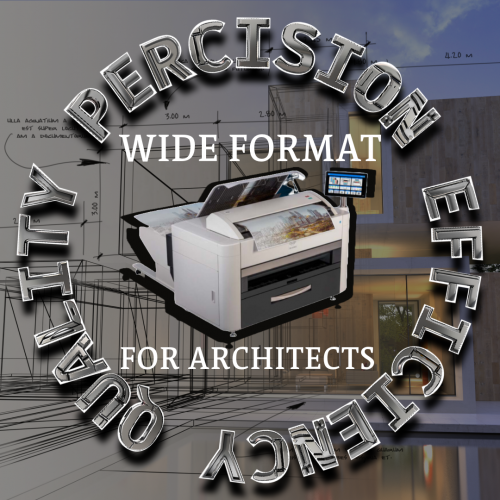
In the fast-paced world of architecture, precision, efficiency, and quality are paramount. Wide format printers have emerged as indispensable tools, revolutionizing the way architectural firms operate. Here’s how these powerful devices can benefit architecture companies:
1. Enhanced Precision and Detail
Architectural designs demand high levels of detail and accuracy. Wide format printers are capable of producing large-scale prints with exceptional precision, ensuring that every line, curve, and annotation is rendered clearly. This level of detail is crucial for creating accurate blueprints, site plans, and detailed renderings.
2. Improved Workflow Efficiency
Traditional printing methods can be time-consuming and often require outsourcing, leading to delays. Wide format printers allow architecture firms to bring printing in-house, significantly reducing turnaround times. This means faster revisions, quicker approvals, and the ability to meet tight deadlines more effectively.
3. Cost Savings
Outsourcing large prints can be expensive. By investing in a wide format printer, architecture companies can save on the costs associated with third-party printing services. Additionally, having the capability to print on-demand reduces the need for large print runs, minimizing waste and further cutting costs.
4. Versatility in Printing Materials
Wide format printers are not limited to just paper. They can print on a variety of materials, including vinyl, canvas, and fabric. This versatility allows architects to create a range of outputs, from traditional blueprints to presentation boards and marketing materials, all in-house.
5. Enhanced Presentation Quality
First impressions matter, especially when presenting designs to clients or stakeholders. Wide format printers produce high-quality, vibrant prints that can make presentations more impactful. The ability to print large, detailed visuals helps convey ideas more effectively and can be a key factor in winning projects.
6. Sustainability and Environmental Impact
Many modern wide format printers are designed with sustainability in mind. They use eco-friendly inks and energy-efficient technologies, reducing the environmental footprint of printing activities. This aligns with the growing emphasis on sustainability within the architecture industry.
7. Customization and Flexibility
Wide format printers offer the flexibility to customize prints according to specific project needs. Whether it’s adjusting the scale, adding annotations, or printing in different formats, these printers provide the adaptability required to meet diverse project requirements.
Conclusion
Wide format printers are more than just a tool for printing large documents; they are a strategic asset for architecture companies. By enhancing precision, improving efficiency, reducing costs, and offering versatile printing options, these printers empower architectural firms to deliver high-quality work consistently. Investing in a wide format printer can be a transformative step, driving innovation and success in the competitive field of architecture.

